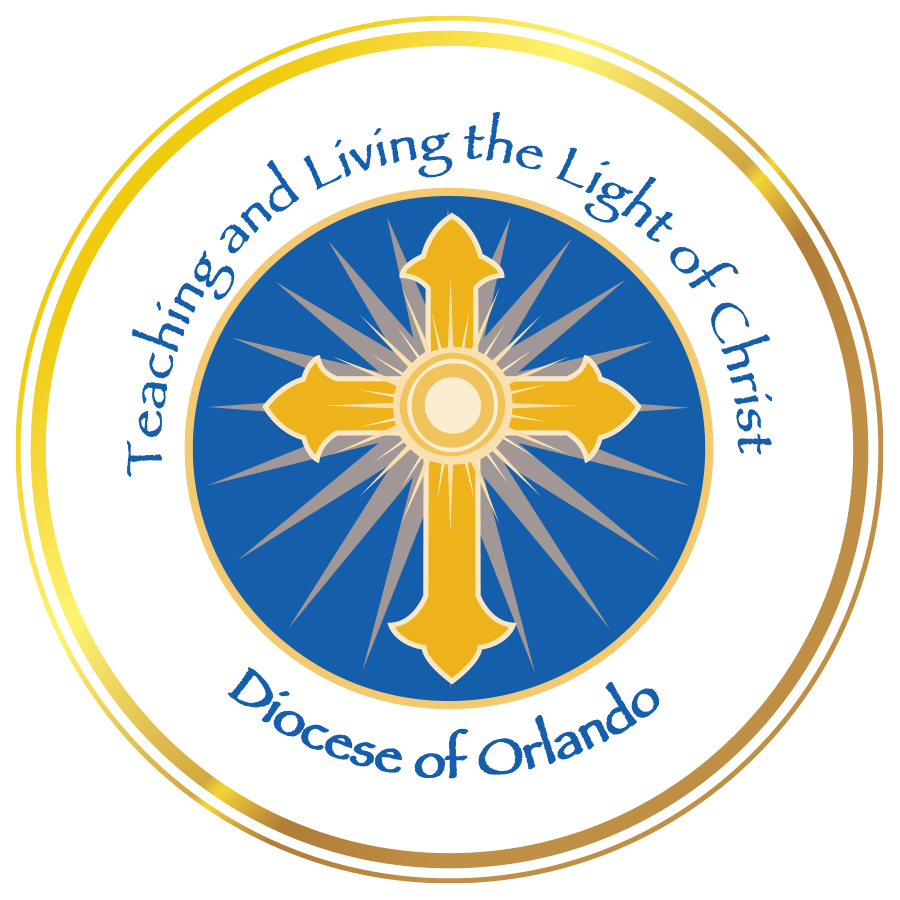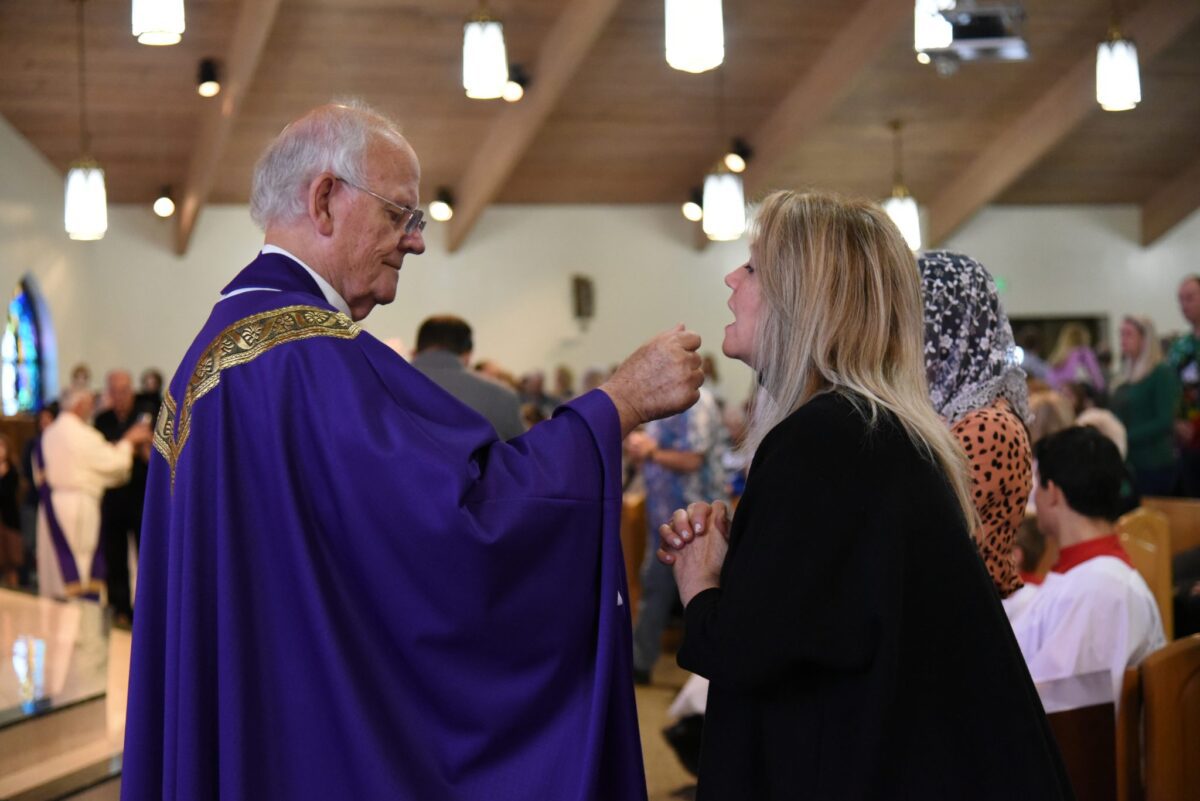ORLANDO | Understanding the Communion rite is the fourth part of the meaning of the Mass series. Part of the Liturgy of the Eucharist, the Communion rite serves to prepare for the reception of Holy Communion. In the U.S. Conference of Catholic Bishops’ resource, “The Introduction to the Order of Mass (IOM): A Pastoral Resource of the Bishops’ Committee on the Liturgy,” the bishops state: “This rite expresses the mutual love and reconciliation that are both the condition and the fruit of worthy communion and the unity of the many in the one symbolized at both the natural and the sacramental level” (IOM, 125).
The Lord’s Prayer
Jesus Himself taught the faithful to call God “our Father,” revealing we are sisters and brothers of the one Father who is the source of all we are and all we have been given. By baptism into Christ we received the Spirit of adoption, in which we cry, “Abba, Father!” (Rom 8:15).
In the Lord’s Prayer, the community prays together as one family. It is a prayer that calls us to right relationship with God and each other. We pray for our daily bread, for forgiveness as we strive to forgive, and for freedom from evil. We pray through mutual love, reconciliation and the Holy Communion which we are about to enter, we will become one with the Father as Christ is one with the Father with the Holy Spirit. The Lord’s Prayer helps prepare our souls “so that what is holy may, in fact, be given to those who are holy” (General Instruction of the Roman Missal, 81).
The Sign of Peace
In the earliest days of the Church, the sign of peace was in the form of a ritual kiss, echoing St. Paul’s teaching to the Romans “greet one another with a holy kiss” (Rom 16:16). In today’s liturgy, the sign is determined by the conferences of bishops in accordance with the culture and customs of the people. God gives us His peace through Christ — not as the world gives peace, but a divine peace; a foretaste and promise of the heavenly kingdom where all will live in perfect union with the triune God in the absence of all evil. This gesture is the perfect segue to praying the Lord’s Prayer.
The bishops of the United States explain: “The exchange of peace before the reception of Holy Communion acknowledges Christ whom we receive in the sacrament is already present in our neighbor. … Like the ‘Amen’ at Communion, the exchange of peace is the acceptance of a challenge: a gesture expressing the belief that we are members, one with another, in the body of Christ” (IOM 129).
The Fraction Rite
The “breaking of the bread” was the term used in the early Church for celebration of the memorial of the Lord’s Supper (Acts 2:42). At the Last Supper, Jesus broke the bread and gave it to his disciples, saying, “This is my body.” The symbolism of the “one bread” broken and shared is central to this ritual. As St. Paul writes: “Because the loaf of bread is one, we, though many, are one body, for we all partake of the one loaf” (1 Cor 10:17).
The Lamb of God (Agnus Dei) is the prayer to be sung or recited during the fraction rite and it should accompany the entire action. The invocations of the Lamb of God call to mind it is through Jesus Christ that our sins are forgiven and we are reconciled to God. As the supplication “have mercy on us,” gives way to the final “grant us peace,” our hearts and minds are attuned to God’s mercy through which we have the promise of peace.
Communion
Having been led to the most sacred moment of the Mass with hearts and minds conformed to Christ, we hear the invitation to come and share in the Sacrament of love and unity. The celebrant announces, “Behold the Lamb of God,” (echoing the words of John the Baptist who announced the Messiah). “Behold Him who takes away the sins of the world. Blessed are those called to the supper of the Lamb.” In this sacred meal, in this time, in this space, we receive the foretaste and promise of heaven at the wedding feast of the Lamb.
We respond with the words “Lord, I am not worthy that you should enter under my roof, but only say the word and my soul shall be healed,” in the hope that we might hear Jesus’ response in our hearts, “Amen, I say to you, in no one in Israel, have I found such faith” (Mt 8:10).
As we come forward to receive the Sacred Body and Blood of Our Lord Jesus Christ, we observe His command to “take and eat” and “take and drink.” The General Instruction of the Roman Missal (GIRM) states “Holy Communion has a fuller form as a sign when it is distributed under both kinds. For in this form the sign of the eucharistic banquet is more clearly evident and clear expression is given to the divine will by which the new and eternal Covenant is ratified in the blood of the Lord” (GIRM, 281).
The Church also indicates that we come forward in a procession, which has symbolic meaning. Not only does it express the communal nature of Holy Communion, but also the notion we are a pilgrim people on a journey. This journey requires a certain sensitivity and responsibility, for not only do we enter into unified song during the procession, but we also show reverence to each other as brothers and sisters on the journey. Together, as a people, we come forward in humility and charity, aware and responsive to each other as we encounter the Shepherd whose hand feeds us and who answers all our needs.
Just as the Israelites were fed with manna in the desert, we are fed on our journey to the Promised Land — the new and everlasting Jerusalem. The words are simple: “The Body of Christ,” and, “The Blood of Christ,” to which each communicant responds, “Amen.” The gesture is simple: a reverent bow of the head. Then returning to our place, keenly aware of the sacredness of our actions and the great mystery we have received, we offer a personal prayer of thanksgiving. We become engulfed in a unique and profound way with Christ’s presence in His body — broken, shared and risen in His people now manifested in the Church.
The Prayer After Communion
The priest calls us to prayer, asking the Father to make the spiritual effects of the Eucharist continually present in our lives so that sent out, we may be the body of Christ for the life of the world.
By Bruce Croteau, Special to the Florida Catholic, December 19, 2022
Read Part Five: The Meaning of the Mass | The Concluding Rites: Go forth the Mass is ended

